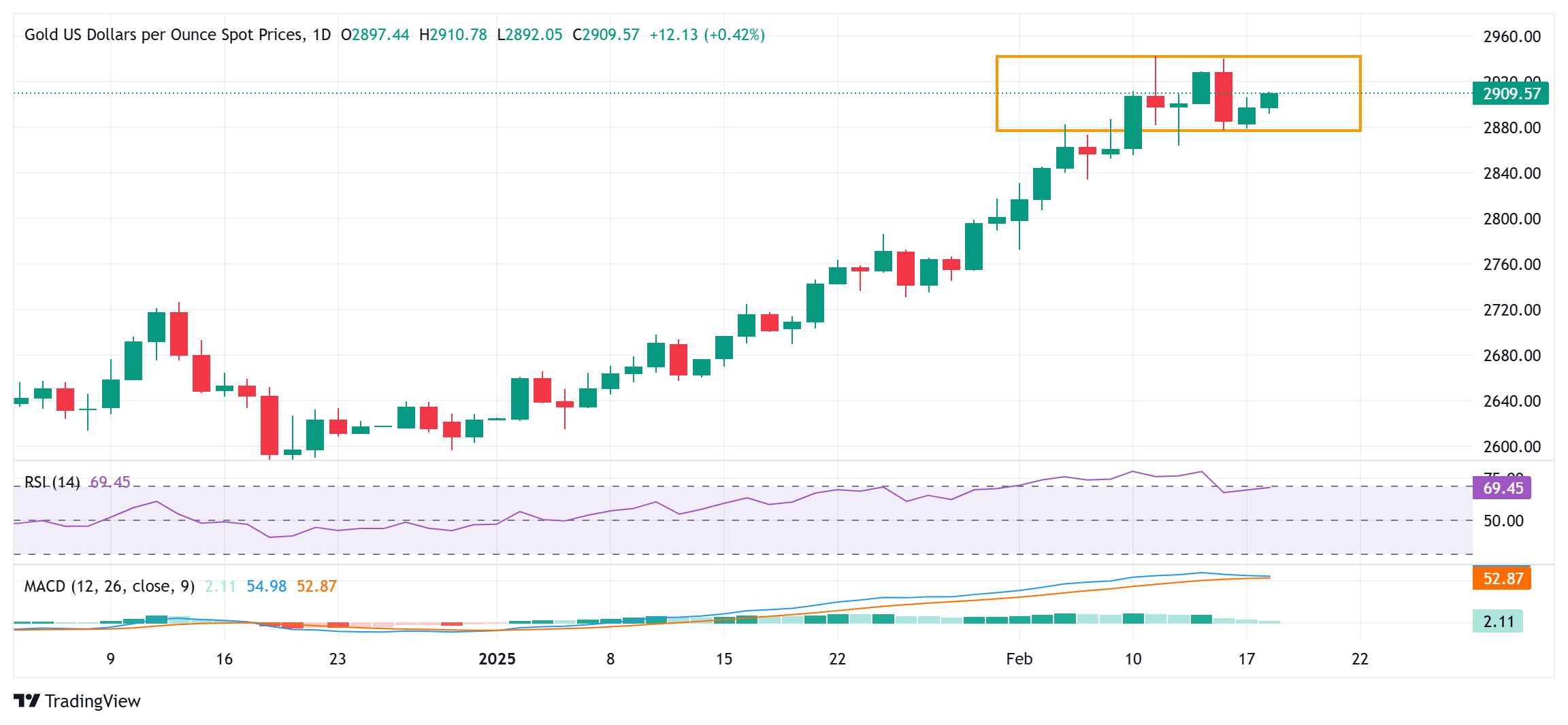Gold prices remained steady above $2,900, with the metal struggling to break out of its recent trading range as investors weighed Federal Reserve policy signals and broader market trends. While demand for safe-haven assets has provided support, a lack of clear momentum has kept XAU/USD confined within familiar levels.
The US dollar’s mixed performance has played a key role in gold’s consolidation, as traders assess whether the Federal Reserve will maintain its higher-for-longer stance or pivot toward policy easing. Recent economic data has fueled speculation over the Fed’s next move, keeping gold sensitive to shifts in Treasury yields and inflation expectations.

Gold US Dollar per Ounce 1-D Chart as of February 18th, 2025 (Source: TradingView)
Despite its inability to push significantly higher, gold has found a strong floor above $2,900, backed by geopolitical uncertainty and central bank purchases. Global economic concerns and demand from emerging markets have continued to lend underlying strength to the metal, preventing sharp declines even amid market fluctuations.
Meanwhile, US economic data releases in the coming days could provide fresh direction for gold. Strong numbers could boost the dollar and bond yields, pressuring the metal, while weaker data may reignite expectations for a Fed rate cut, offering gold a path toward a breakout.
Analysts note that gold remains in a consolidation phase, with key resistance levels just above $2,900 capping further gains. A decisive break above these levels could open the door for a new rally, while failure to sustain momentum may lead to profit-taking and short-term pullbacks.
For now, traders are closely watching Fed signals and macroeconomic data to determine whether gold can escape its current range. If risk sentiment shifts or central banks signal continued demand, gold could see renewed upside momentum, but until then, XAU/USD remains locked in a wait-and-see mode.













